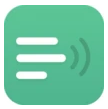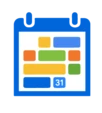Overview of Etherpad
Etherpad is a free, open-source collaborative text editor that allows multiple users to edit documents simultaneously in real time. Developed and maintained by The Etherpad Foundation, this lightweight yet powerful platform enables individuals, teams, and organizations to create and manage documents together without delays, conflicts, or the need for constant version tracking.
Unlike traditional word processors or cloud-based editors that rely on proprietary systems, Etherpad provides full transparency and control over your work. Every change is instantly synchronized across all connected users, ensuring that everyone always sees the most up-to-date version of a document.
Whether you’re drafting meeting notes, writing reports, or collaborating on research papers, Etherpad is built to simplify teamwork and enhance productivity.
Core Concept Behind Etherpad
At its heart, Etherpad aims to make collaborative writing as smooth and accessible as possible. The idea is simple but powerful: everyone writes together. When one person types, their words instantly appear on everyone’s screen, highlighted with unique color codes for each contributor.
This real-time collaboration eliminates the need for emailing multiple versions of documents or manually merging edits. Instead, Etherpad keeps everything live, synchronized, and transparent—making group work faster, cleaner, and more efficient.
Key Features of Etherpad
1. Real-Time Collaborative Editing
The defining feature of Etherpad is its real-time synchronization. When multiple people edit the same document, all changes appear instantly across every user’s screen. This makes Etherpad perfect for brainstorming sessions, meetings, or group writing projects where quick feedback and parallel editing are essential.
Each user’s input is highlighted with a distinct color, allowing easy identification of individual contributions. This color-coded system fosters accountability and clarity, ensuring every participant’s work is recognized.
2. Open-Source and Transparent
Etherpad is completely open-source, meaning its source code is publicly available for anyone to review, modify, and improve. This transparency ensures that Etherpad remains secure, flexible, and community-driven.
Developers can customize the software, integrate it with other tools, or host it privately on their own servers. This flexibility gives organizations complete control over data security and privacy, unlike proprietary collaboration platforms that store data externally.
3. Simple, Lightweight, and Fast
Despite its advanced functionality, Etherpad is remarkably lightweight. It loads quickly on almost any device and runs efficiently even on modest systems.
The clean interface focuses entirely on text editing—no clutter, no distractions. This simplicity enhances focus and productivity, making Etherpad an ideal choice for students, writers, coders, and professionals who value speed and reliability.
4. Full Version History
Every edit in Etherpad is automatically recorded, allowing users to view the complete history of a document. You can scroll back through earlier versions, compare changes, or restore previous drafts if needed.
This versioning system is invaluable for group projects, as it maintains accountability and allows easy recovery from mistakes or accidental deletions.
5. Integrated Chat and Communication Tools
Collaboration isn’t just about editing—it’s also about communication. Etherpad includes a built-in chat box, enabling team members to discuss edits, share ideas, and clarify tasks in real time without switching to another platform.
This integrated chat function streamlines teamwork, keeping discussions and document edits in one unified workspace.
6. Rich Text Formatting
While Etherpad focuses on simplicity, it still offers essential text formatting options such as:
- Bold, italics, underline
- Bullet points and numbered lists
- Hyperlinks
- Heading levels
- Indentation control
These features ensure your documents look polished while maintaining a fast and distraction-free writing environment.
7. Plugin Support and Extensibility
The Etherpad ecosystem includes a wide range of plugins that expand functionality. Users can install plugins to add features like:
- File import/export (Word, PDF, HTML, Markdown)
- Spell checking
- Table insertion
- Image embedding
- User authentication
- Real-time statistics and analytics
This extensibility allows organizations to tailor Etherpad to their specific workflows and collaboration needs.
8. Secure and Private Collaboration
Etherpad prioritizes data privacy and user security. Since it’s open-source, you can host it on your own server, ensuring all data stays under your control. This makes it ideal for companies, institutions, and educators who handle sensitive information.
You decide who can access your pads, making collaboration both open and secure.
System Information and Version Details
| Property | Information | | -------------------- | ----------------------- | | Software Name | Etherpad | | Version | 2.5.1 | | License | Free | | Operating System | Windows | | Category | Text/Documents | | Language | English + 47 more | | Author | The Etherpad Foundation | | Downloads | 0 | | Release Date | October 21, 2025 | | Content Rating | Not specified | | Advertisement | Not specified |
Why Teams Choose Etherpad
1. Real-Time Teamwork Without Barriers
Unlike most collaborative editors that rely on cloud subscriptions, Etherpad is freely available and accessible to everyone. Multiple users can join the same document instantly through a shared link or local network connection—no installation or accounts required.
2. Perfect for Education and Remote Work
Teachers and students use Etherpad to collaborate on assignments, group projects, and classroom notes. Its simplicity and accessibility make it a go-to solution for remote learning and hybrid classrooms.
Likewise, businesses and teams use Etherpad for meeting notes, brainstorming sessions, and agile workflows. Its minimal design encourages focus, and real-time syncing eliminates confusion during fast-paced discussions.
3. Complete Control Over Data
Because you can self-host Etherpad, all your content remains private. This makes it a great choice for organizations that prioritize security—such as research teams, NGOs, and government agencies.
4. No Software Lock-In
You own your data. You can export documents in multiple formats, including plain text, HTML, and PDF, ensuring portability and long-term access without dependency on proprietary platforms.
How Etherpad Works
- Create a Pad: Start a new “pad” (Etherpad’s name for a document).
- Share the Link: Send the link to anyone you want to collaborate with.
- Edit Together: Everyone can type simultaneously, with color-coded text showing individual contributions.
- Communicate via Chat: Discuss edits and share feedback in real time.
- Save or Export: Once finished, export the document in your desired format.
That’s it—no installations, no waiting, no synchronization delays.
Benefits of Using Etherpad
- Free and Open Source – No licensing fees or restrictions.
- Real-Time Collaboration – Live editing with instant updates.
- Version Control – View, restore, or compare document versions.
- Lightweight Performance – Runs smoothly on any Windows system.
- Cross-Platform Accessibility – Works on web browsers and multiple devices.
- Privacy and Control – Fully customizable self-hosted solution.
- Plugin Ecosystem – Expand features easily with community-developed add-ons.
These advantages make Etherpad not only a writing tool but a complete collaboration platform for individuals and organizations alike.
Practical Use Cases for Etherpad
- Team Brainstorming: Collaborate on ideas in real time during meetings.
- Academic Research: Write papers and share notes among research groups.
- Project Management: Maintain live task lists or sprint planning documents.
- Education: Teachers and students co-write assignments and feedback.
- Event Planning: Coordinate details and schedules collaboratively.
- Documentation: Create manuals, wikis, or knowledge bases as a team.
From startups to universities, Etherpad adapts to virtually any collaborative workflow.
Performance and Stability
Etherpad is engineered for high performance even in large collaborations. Dozens of users can edit the same document simultaneously without lag or conflicts.
It’s optimized for Windows environments but also works across platforms via browsers, ensuring universal accessibility.
FAQs About Etherpad
Q1. What is Etherpad used for? A1. Etherpad is used for real-time collaborative document editing, allowing multiple users to write and edit simultaneously.
Q2. Is Etherpad free? A2. Yes, Etherpad is completely free and open-source.
Q3. Do I need to create an account to use Etherpad? A3. No, you can start editing immediately without registration.
Q4. Can Etherpad be self-hosted? A4. Yes, you can install and host Etherpad on your own server for full data control.
Q5. Does Etherpad support rich text formatting? A5. Yes, Etherpad supports standard formatting options like bold, italics, lists, and headings.
Q6. How secure is Etherpad? A6. Etherpad is highly secure, especially when self-hosted, since all data stays on your servers.
Conclusion
Etherpad stands as one of the most effective, transparent, and empowering tools for real-time document collaboration. Its open-source foundation, real-time synchronization, and ease of use make it ideal for writers, teams, educators, and organizations that value speed, simplicity, and privacy.
With Etherpad, every keystroke counts and every contributor is visible, creating a truly collective writing experience that modern teams can rely on.
Free, flexible, and endlessly extendable—Etherpad continues to shape the future of collaborative editing for users worldwide.








